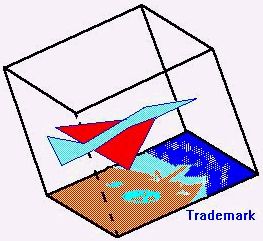|
Orkney-related links on the Internet Orkney Sights and Sounds, Part 4 Fishing has always been a mainstay of the Orkney Islands. Rough seas and superstitions were a detriment. Kirkwall Bay was the more desirable location however it was on Stromness that the Hudson's Bay Company landed. And from here they employed Orcadians whom they took back to Canada. It is said that many of the men recruiting for the Hudson's Bay Company were Indians. Aside from the choppy seas Stromness had a reputation of having sea monsters including the Stoor Worm whose coils encircled the earth. Mermaids and Finmen were less formidable. These they claimed inhabited Findolkaheem a legendary kingdom at the bottom of the sea. Even as late as 1910 three credible witnesses alleged to have seen a monster with an 18 foot neck (Another Loch Ness monster?) In addition there were stories of seal women. Witchcraft was suspected to have come to the islands from the Norse and until late in the 19th century both Orkney and Shetland were avoided by many ships. When the Norse arrived in Orkney they fished seasonally but come spring they once again became bloody Vikings with their longships creating havoc in the British Isles and far beyond. Ships were wrecked on the hazardous seas, many of them deliberately as on the Cornish coast later in time. The wreckers used a shore light to entice them onto rocks or to shore where ships were then looted and the crew killed. In spite of the treacherous seas pirates of the English Channel and wars between the British and French made the harbors of Stromness more desirable than before. Fishing always was the single most important factor here. Early in the 1800's it was a port used by the whalers. In the 1950's Stromness became the fish marketing center in Orkney. A lifeboat and Northern Lighthouse Board supply ship Pole Star which serviced lighthouses along the coasts of Scotland is based here and is the home for many lighthouse keepers in the area. The seas surrounding Mainland keep the farmer's land from cooling down too much but it also means that surroundings are rarely extremely warm. People discuss the four seasons but none of the seasons in Orkney is definite. July weather can have sunny days with oppressive heat however it is also possible that horrendous gales can arise costing sailors lives and on at least one occasion prevented the 750 ton mailboat from crossing the Firth. The westwind is the most prevalent but it is the south-east wind that is most dangerous and destructive. We had wondered as we entered Hellihole Street why we had seen steel hand-rails on some of the sidewalks. Now we knew. When the winds blow, which is often, it is said that some of the farmers bring their horses into their homes, which often are longhouses. As we walked above the town we saw beautiful lands and a few scattered farms. The expression seemed apt that Stromness was a fishing community that farmed while many others of the islands were farming communities that fished. From our view we could see very few farms. The walk was delightful and most serene of this peaceful trip. Although Kirkwall is the larger and best known of the towns on Mainland Stromness is by far the most picturesque. At last we came to the top of the hill called Brinkie's Brae from which we could view all of Stromness. Stromness we later learned had been originally named by the Norse as Hamnavoe (which meant Haven Bay). From here we could see Holms, the tidal islands enclosing the harbor. We could also see more of Stromness and Outbrecks, our next planned stop.
|
